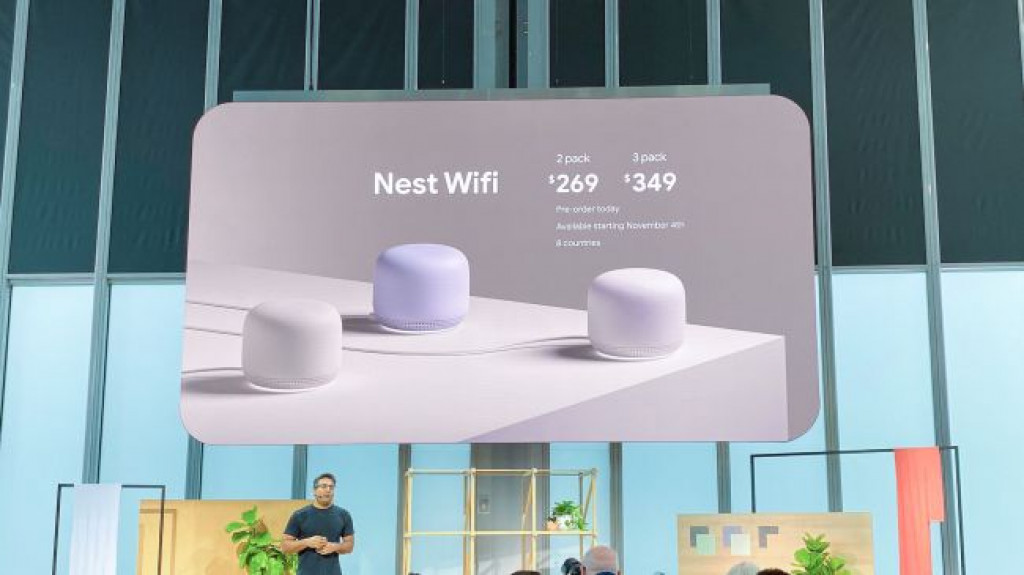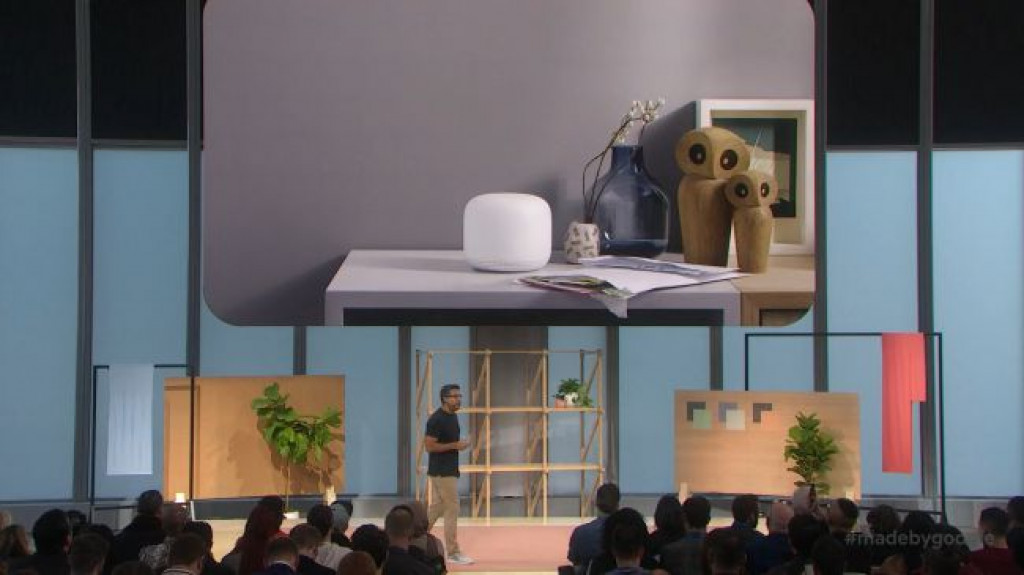
EARLY VERDICT
The Google Nest Wifi is an attractive mesh Wi-Fi router that you won’t be tempted to hide out of sight. And, while it lacks Wi-Fi 6 compatibility, the fact that you don’t need a separate device to act as a smart home hub might just sell you on it.
FOR
- Impressive design
- Doubles as a smart home hub
- A lot of wireless network coverage
AGAINST
- A little expensive
- No Wi-Fi 6
The Google Nest Wifi is the followup to the massively successful Google Wifi, a product that in no small part helped mesh Wi-Fi routers take over the world. The concept behind the Google Wifi was simple: create a simple, robust and expansive wireless network that you don’t need a degree in engineering to set up. Combined with the clean aesthetic, it became the headset to beat.
The Google Nest Wifi takes this legacy and expands on it even further, bringing faster speeds and an even more attractive design, but with a higher price tag.
It also acts as a hub for your smart home devices, just like certain models of the Google Wifi did. However, the fact that the Google Nest Wifi lacks Wi-Fi 6 compatibility might make it less future-proof than the Google Wifi was three years ago.
Price and availability
The Google Nest Wifi is more expensive than its predecessor, coming in at $169 / £149 / AU$269 for just the router. Now, Google does claim that this router will be enough for folks whose homes are under 2,200 square feet, but for a comparable Google Wifi, you would have paid $99 (£129, AU$199). That’s a pretty big jump in price.
If your home is larger than 2,200 square feet, you’ll have to shell out for one of the multi-packs. This will essentially be a router plus one or two “Points” which double as both a smart speaker and a Wi-Fi repeater. If you want the Nest Wifi router with a single point, you’re looking at $269 / £239 / AU$399, or $349 / AU$549 for the router and two points. Don’t worry, though, you can still expand your Wi-Fi network with additional Nest Wifi Points, for $149 / £129 / AU$229 each.

If you already have the Google Wifi, however, you can just pick up a Google Nest Wifi Point to act as both a repeater and a smart speaker.
If that all sounds good to you, preorders of the Google Nest Wifi are available now, and should start showing up by November 4 in the US. For folks in the UK and Australia, the Google Nest Wifi will be available a bit later, but we’ll be sure to update this hands-on review when we get that information.

Design
One of the biggest problems with wireless router design is that they’re usually not attractive enough to convince users to put them front and center in their homes. However, Google aims to change this (again) with the Google Nest Wifi. The original Google Wifi wasn’t ugly, which was a point in its favor, but the Nest Wifi is straight up pretty.
Both the router and the point are basically smooth plastic domes that are a bit larger than the original Google Wifi. The bottom of the point has a bunch of holes, which makes sense as it’s a speaker, but the router is completely smooth. And, while the Router only comes in white, the Point will be available in one of three colors: a light pink, light blue and the same white color option as the router. Google calls these Sand, Mist and Snow, respectively.
As far as ports are concerned, on the router you’ll get two Gigabit Ethernet points and power in, but this time around the Wifi points don’t have ethernet. This is a step back as far as we’re concerned, as the Google Wifi had Ethernet on each router, making it easy to connect devices that needed it. Even competing mesh Wi-Fi routers, like the Netgear Orbi, have Ethernet ports on their satellites. It likely won’t be a dealbreaker for most people, but it is a feature that Google cut, so take that as you will.
So, basically, the Google Nest Wifi is an attractive mesh router that doubles as a speaker, and that is enough to make it worth paying attention to. At the very least it may stop people’s urge to hide their router from sight.

Performance
Now, we didn’t get a chance to test the Google Nest Wifi in any meaningful way at the Made by Google event, but we can take a look at the specs to get some idea of what this thing can do.
The Google Nest Wifi is packed with a quad-core ARM processor and something Google is calling a “High-performance ML hardware engine”. We don’t exactly know what this means, but we do know that the Google Nest Wifi will use machine learning to boost performance over time.
And, because this is a mesh Wi-Fi router, you can expect some excellent network coverage. Google claims that even if you just have the router, you can get up to 2,200 square feet covered in Wi-Fi, and if you splurge on the router and two points, you can expect a whopping 5,400 square feet.
There is one critical thing holding the Nest Wifi back, though, and it’s the lack of Wi-Fi 6 compatibility. For most people, this likely won’t be a big deal, as only a few devices even support the standard. But, routers aren’t exactly devices that folks upgrade each year, so a new router that costs as much as the Google Nest Wifi should absolutely be packed with the latest technology. If you’re paying this much for a router, it should be at least a little future-proof.
For most people the Google Nest Wifi will be more than enough for a while, but if you’re one of the lucky people to have a Gigabit internet connection, it’s unlikely that you’ll get the full speed out of this router. We won’t know that for sure until we get it in for testing, but its not looking promising for anyone that needs that level of performance.

Early verdict
For most people, the Google Nest Wifi may end up being the best router out there. It has a clean aesthetic, doubles as a smart speaker and is easy to use. The lack of Wi-Fi 6 compatibility might make the Google Nest Wifi a hard sell for anyone with a Gigabit internet connection, but that is likely a very small group of potential buyers.
The Google Nest Wifi is for anyone that wants to condense the amount of devices they need hooked up in their homes, rather than people who need the best performance out there. We just wish it was a little more future-proof.
Source: techradar.com









































